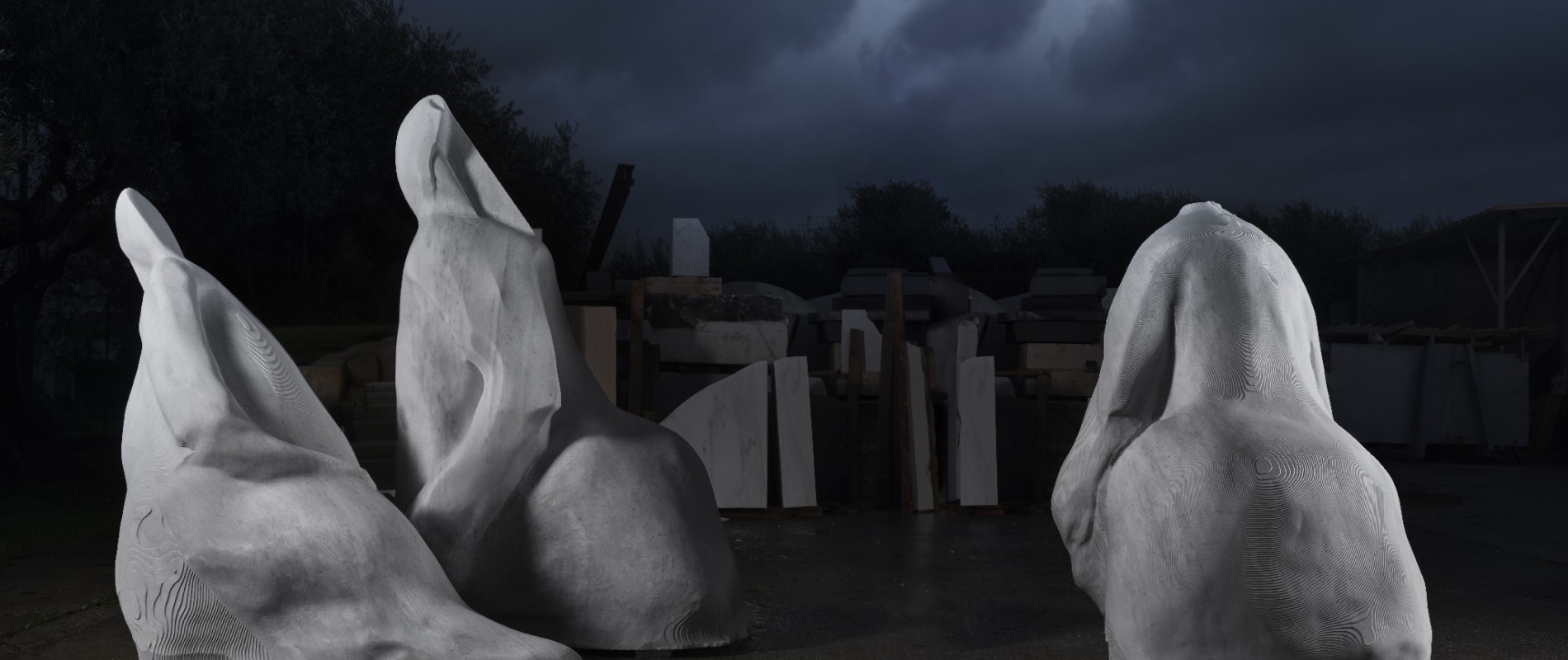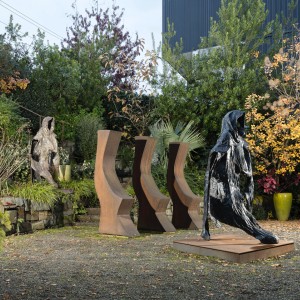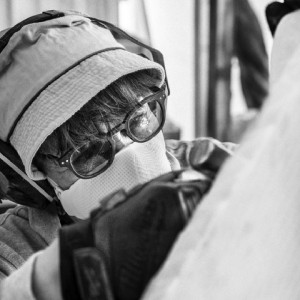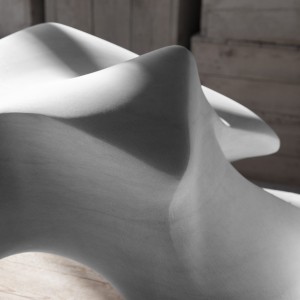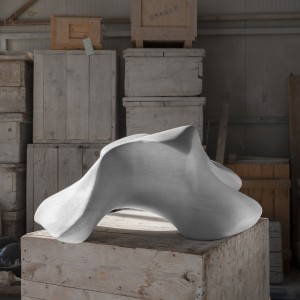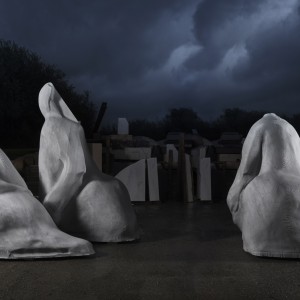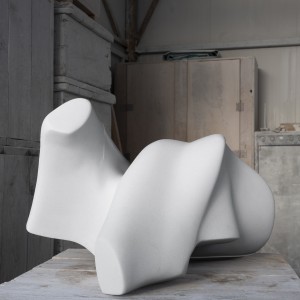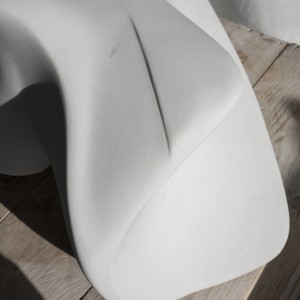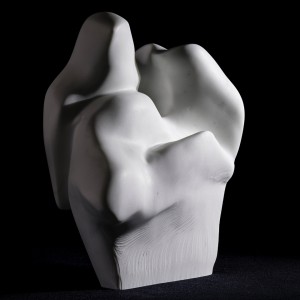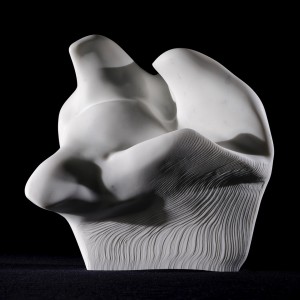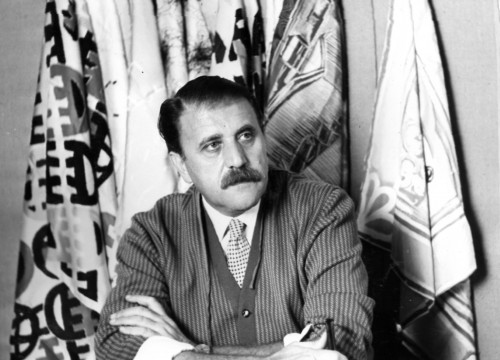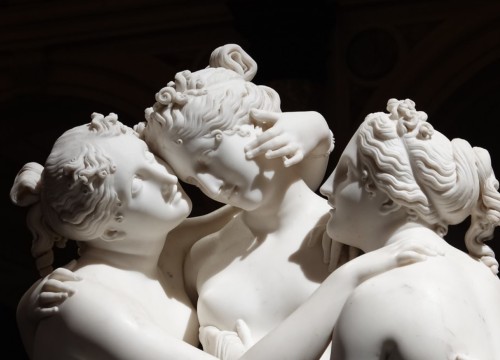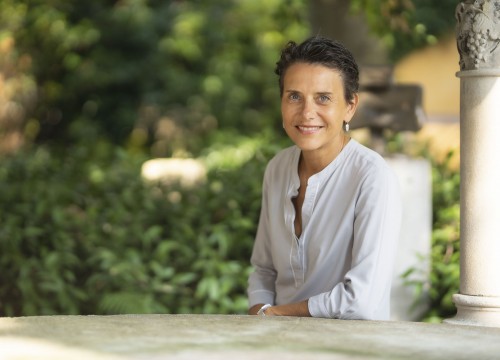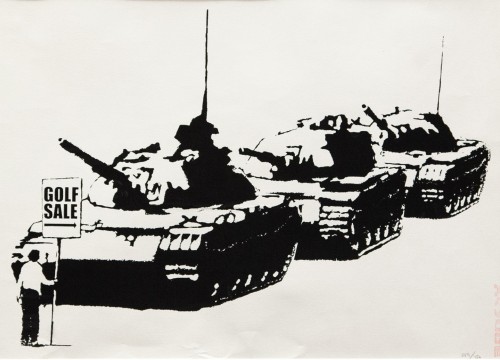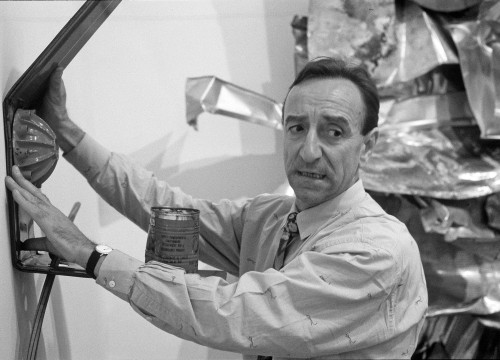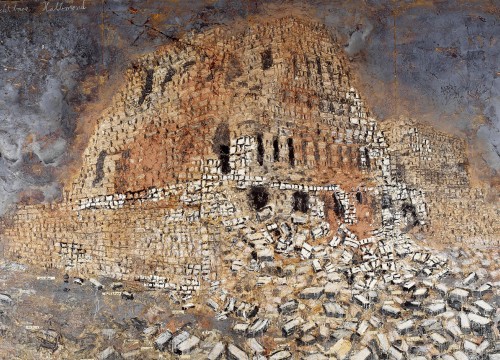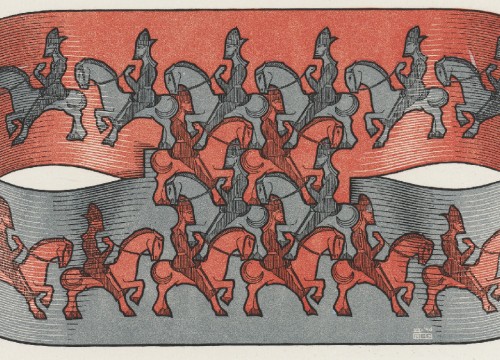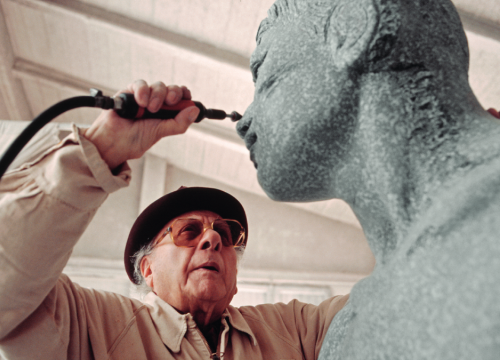Architect, her works can be found in Canada, USA and Japan. Sculptress, she lives between Seattle and Pietrasanta where she spends 5 months a year to realize monumental artworks
We met Louise Durocher in Pietrasanta at Giorgio Angeli’s studio. She greeted us with flowing red hair and piercing green eyes in front of her latest creation: Conversation.
What do you tell us through this sculpture, Louise?
Thirty years ago, when it was conceived, the sculpture consisted of a female and a male part. I had titled it One Way Conversation. It was a kind of communication shot like an arrow to its target. The sender represented the power. The recipient stood leaning on one arm, trying not to capitulate. In the fall of 2023, the bully was finally roughed out but accidentally beheaded while being moved.
SHE FELL IN LOVE WITH PIETRASANTA IN 1995 WHEN SHE DISCOVERED IT
Thus, Man without a Head was born. An accidental piece that became a source of discussion, teasing, laughter. It tormented me. I started to realize that the original concept had to be widened to include Man without a Head. Therefore, it became a trio. Scale and placement are not accidental: the figures are taller than the human being but not overpowering. They are storytellers placed to invite participation in finding a solution to our disconnect, our lack of trust and will to accept that differences are beautiful.
Let’s start with your education: degree in architecture, with studies in Canada, in USA and in France.
In 1984, I graduated from Concordia University in Montreal with a BFA majoring in sculpture. Shortly after, I moved to Seattle, Washington for graduate studies in Landscape architecture at the University of Washington. Two years later, I transferred to the Architecture department. In 1986, thanks to a scholarship, I had the opportunity to attend the École Spécial d’Architecture in Paris. The time spent at that school was the most important part of my education. Surrounded by students from different nations, I learned that there can be many good solutions to a problem. At first, an idea might seem completely unacceptable, but after learning about the culture and background of those who generated it, their solutions become logical even if opposite to my way of thinking. Paul Virilio used to challenge us by proposing the same project three times in a row. The best project was not always the first one. It is important to push ourselves to think outside the box. I graduated with a Master of Architecture in 1990.
SEATTLE IS HER LANDING PAD WHERE SHE GOES TO REST AND REENERGIZE
As an architect, you have been traveling the world for important commissions.
I have been fortunate to work with multicultural teams for most of my career. Projects can be found in Canada, USA, Japan, and Europe.
You have always cultivated plastic art at the same time.
My mother was a painter; she gave me a pencil as soon as I could hold one. At first, I drew; I started sculpting at the age of 11 and never stopped. I have always had a space in which to devote myself to sculpture. It is the constant thread in my life: my northern star.
How do you feel about living in Seattle and being a citizen of the world?
For me, Seattle has become a landing pad where I come to rest and regroup before the next adventure. My studio is secluded, surrounded by a peaceful garden, where I work alone with my thoughts to reenergize.
The discovery of Pietrasanta.
I arrived in Pietrasanta in 1995 to attend a marble carving workshop. Until that moment, I had sculpted mostly soft stones, like alabaster and soapstone. Even though I was a well-seasoned direct carver, I had never worked from a model, let alone using Michelangelo’s method of enlarging/reducing using calipers. The workshop was humbling and stimulating. I fell in love with Pietrasanta, where, since 2018, I spend 5 months a year working in Giorgio Angeli’s studio, realizing monumental sculptures. I have planted roots.
HER WORKS INVITE TO ACCEPT THE BEAUTY OF DIFFERENCES
You often work on monumental works: an enormous effort, especially for a woman.
Yes, it is physically very demanding but essential for me. Some messages are better heard if the scale is larger than life because of the importance of the subject. For example, Conversation and The Hand of Humanity expressed in a small scale would not adequately resonate. Hence, they are monumental.
Tell us about your way of working.
In my head, I walk around imagining spaces, objects, and the feeling they create. I see the light they are surrounded by, feel the breeze that goes through, breathe the smells wafting in the air, and envision them in buildings, amongst gardens, enjoyed by people.
It can be said that human emotions are the main subjects of your works.
Yes, I am fascinated by the complex human feelings, tensions, and experiences that manifest in people’s relationships. Everyone is unique. Art is therapeutic, both for those who produce it and for those who look at it. Art is the unbroken tread in my life, it has seen me through hardships, it has been a catalyst for change, an energy producer. Sculptures conceived during dark times have an intrinsic capacity to reach people. I have seen that.
Anything to add?
As my grandmother told me, 'The road is long, the road is hard, but it is the road.' Very few things came easily for me but being passionate, perseverant, sometimes relentless has allowed me to become who I am today: a part of the whole.

